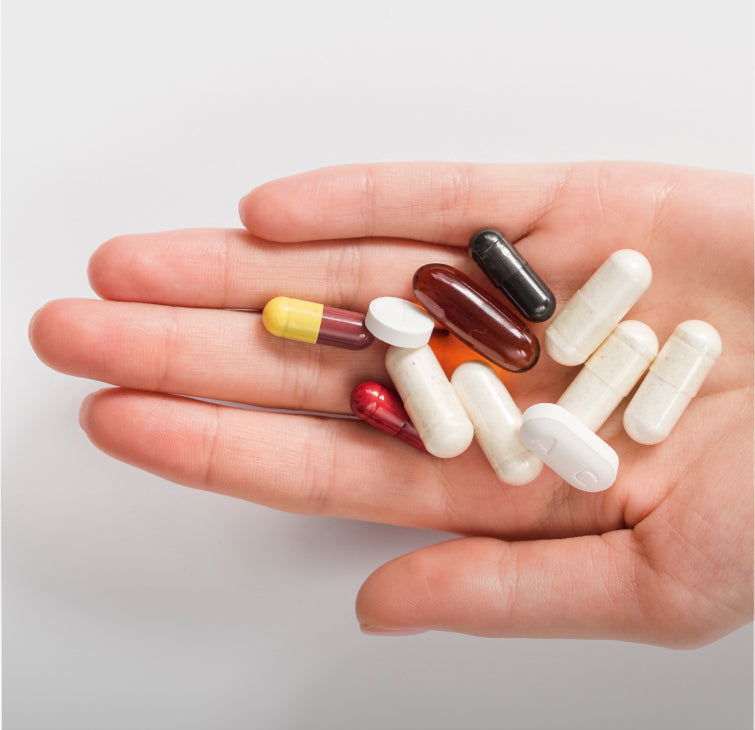Vitamin D is an essential nutrient that plays an important role in the proper functioning of the body. With the increasing interest in this vitamin, it is important to understand the distinctions between its two main forms: vitamin D2 and vitamin D3 . In this article, we will take a detailed look at the differences between vitamin D2 and D3 to help you make informed choices for your future supplement.
What is vitamin D?
Vitamin D , often referred to as the " sunshine vitamin ," is an essential nutrient that plays a vital role in the body's functioning. It is fat-soluble and efficiently stored in fatty tissue. A unique characteristic of vitamin D is its ability to act as a hormone. In fact, the body can synthesize it from cholesterol through skin exposure to sunlight. This underscores the importance of sun exposure in maintaining adequate levels of this vitamin.
Like other vitamins, such as B9 and B12, which have multiple forms, vitamin D exists in seven molecular variations, from D1 to D7. Of these, the two most common forms found in foods and supplements are vitamin D2 and vitamin D3.
What is the role of vitamin D in the body?
Vitamin D plays a crucial role in many biological reactions essential to health. It is mainly involved in:
- Calcium metabolism : Vitamin D is essential for the absorption of calcium in the intestine, which is vital for bone health.
- Regulation of phosphocalcic balance : It helps maintain an appropriate level of calcium and phosphorus in the blood, thus promoting adequate bone mineralization.
- Muscle tone : Vitamin D contributes to muscle strength, which is important for preventing falls, especially in older adults.
- Prevention of osteoporosis : In synergy with vitamin K2, it contributes to the proper maintenance of bone and joint tissue.
Vitamin D is also involved in over 100 other physiological processes, including immune protection, hormonal regulation, and DNA regeneration. Research is underway to better understand its role in preventing degenerative and autoimmune diseases, such as diabetes and multiple sclerosis.
Vitamin D deficiency can have serious consequences, including rickets in children. This disorder is characterized by insufficient absorption of calcium and phosphorus, leading to impaired and often irreversible bone growth. In the early 20th century, cod liver oil, rich in vitamin D3, was commonly given to children to combat this problem.
How to cover your vitamin D2 or D3 needs?
Daily vitamin D requirements are relatively constant throughout life. For infants, the Recommended Dietary Reference Intake is 10 µg per day (or 400 IU) during the first year. From the age of one and for all adults, this requirement increases to 15 µg per day (600 IU) according to the ANSES recommendations (referral SA O238).
It is important to ensure that the recommended doses are not exceeded, especially in young children. The maximum limit for children is 800 IU per day to prevent the risk of renal hypercalcification. For adults, the maximum daily dose is 4000 IU (100 µg).
Getting enough vitamin D from food can be difficult, even though it is essential year-round . Additionally, while sun exposure can help with vitamin D synthesis, it is not a solution for everyone, especially infants.
What is the difference between vitamin D2 and vitamin D3?
Vitamins D2 and D3 are distinct molecular forms and come from different sources .
Vitamin D2 , also known as ergocalciferol , and vitamin D3: cholecalciferol .
They are both precursors to the active forms of vitamin D (calcifediol and calcitriol), which are produced in the liver and then in the kidneys.
However, vitamin D3 is generally more stable and more bioavailable than vitamin D2. A meta-study published in 2024 in the Netherlands confirmed the superior efficacy of vitamin D3, based on an analysis of 25 available studies.
The specificities of vitamin D2
Dietary vitamin D2 is exclusively of plant origin.
However, it is present in very small amounts, even in the richest plants, such as mushrooms and avocados. Therefore, it is difficult to cover one's vitamin D needs solely through dietary intake of plant origin. For example, one kilo of wild porcini mushrooms contains about 5 micrograms of vitamin D2, which represents only a third of an adult's daily needs.
However, mushrooms are rich in ergosterol, a molecule capable of transforming into vitamin D2 under the influence of solar rays (UV). This transformation, however, requires special treatment, as mushrooms are "allergic" to the sun!
When it comes to supplementation, vitamin D2 is often found in fortified infant formulas and traditional vegan ranges.
The specificities of vitamin D3
In addition to its greater effectiveness, vitamin D3 (cholecalciferol) has two distinctive characteristics.
First of all, in the common diet it is exclusively of animal origin, with significant concentrations in oily fish and livers (whether fish or mammalian).
Next, cholecalciferol is also the form of vitamin D produced by the body when exposed to sunlight. On average, a daily exposure of about thirty minutes on one third of the body allows sufficient vitamin D to be produced.
However, it is important to note that this estimate can vary considerably depending on several factors, including skin pigmentation (lighter skin produces more vitamin D with the same level of exposure), the use of sunscreen, as well as sunlight and outdoor temperature conditions.
Vitamin D2 or D3, which should you choose in a supplement?
Vitamin D is undoubtedly one of the stars of dietary supplements, and choosing the right form is essential.
A meta-study published in 2024 in the Netherlands demonstrated that vitamin D3 is the most effective , surpassing vitamin D2 in terms of health benefits.
In this light, it is interesting to note that plant-based vitamin D3 is now available, extracted from lichen .
Traditionally, vitamin D3 in dietary supplements was derived from lanolin, an extract of sheep's wool. However, the market now offers plant-based vitamin D3 options sourced from wild boreal lichen. Lichens, which are unique combinations of fungi and algae, are one of the earliest forms of terrestrial life, and some of them are particularly rich in cholecalciferol.
Conclusion
To ensure adequate vitamin D intake throughout the year, using a vitamin D3 supplement can be particularly useful. We recommend choosing the D3 form, favoring a plant source such as lichen.
This is precisely the option we've adopted at Argalys. Our vitamin D3 supplement comes in spray form, offering easy and hygienic distribution suitable for the whole family. Each spray delivers 500 IU, a dosage suitable from the first month of life. From the age of 8, you can increase the dose to 2 sprays per day to meet increased needs. Choose our practical and effective solution to support your health and that of your loved ones!
Bibliography:
- https://pubmed.ncbi.nlm.nih.gov/37865222/ - Comparison of the Effect of Daily Vitamin D2 and Vitamin D3 Supplementation on Serum 25-Hydroxyvitamin D Concentration (Total 25(OH)D, 25(OH)D2, and 25(OH)D3) and Importance of Body Mass Index: A Systematic Review and Meta-Analysis
- ANSES (referral SA O238)
 04 74 03 98 80
04 74 03 98 80









